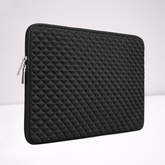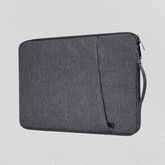Top 10 Oral Hygiene Products for a Healthy Smile
Your smile is one of the first things people notice about you. It can leave a lasting impression and convey a sense of confidence and vitality. To maintain a healthy smile, oral hygiene is of utmost importance. In this article, we will delve into the world of oral health, the significance of dental care, and the role of various oral hygiene products in maintaining optimal oral health. Whether you are seeking to improve your dental routine or looking for the best dental care tools, this guide has got you covered.
Our oral health plays a crucial role in our overall well-being. Neglecting oral hygiene can lead to various dental issues, such as tooth decay, gum disease, and bad breath. Therefore, it is essential to adopt a comprehensive dental care routine and use appropriate oral hygiene products.

Importance of Oral Hygiene
Maintaining good oral hygiene is not just about having a beautiful smile; it is about ensuring the health of your teeth and gums. Poor oral hygiene can lead to dental problems, including cavities, gum infections, and tooth loss. Additionally, studies have shown that oral health is linked to overall health, with poor oral hygiene being associated with systemic conditions like cardiovascular disease and diabetes. By prioritizing oral hygiene, you are investing in your long-term health and well-being.
The Role of Dental Care
Dental care plays a crucial role in achieving and maintaining good oral health. It involves a combination of daily oral hygiene practices and regular visits to the dentist. Let's explore the key aspects of dental care:
Brushing: The Foundation of Oral Hygiene
Brushing your teeth at least twice a day is the cornerstone of dental care. It helps remove plaque, bacteria, and food particles that can accumulate on the teeth and gums. Using a soft-bristle toothbrush and fluoride toothpaste, gently brush in circular motions for two minutes. Ensure you reach all surfaces of your teeth, including the front, back, and chewing surfaces.
Flossing: Reaching Where Your Toothbrush Can't
While brushing is important, it cannot reach the tight spaces between your teeth and along the gumline. That's where flossing comes in. Dental floss helps remove plaque and debris from these hard-to-reach areas. Take a generous length of floss, wrap it around your fingers, and gently slide it between your teeth, making a C-shape motion. Move the floss up and down to clean both sides of each tooth.
Using Mouthwash: An Extra Boost of Freshness
Mouthwash is not a substitute for brushing and flossing, but it can complement your oral hygiene routine. Mouthwash helps kill bacteria, freshens breath, and reaches areas that brushing and flossing may have missed. Choose an alcohol-free mouthwash and swish it around your mouth for about 30 seconds after brushing and flossing.
Regular Dental Check-ups: Professional Care for Optimal Oral Health
Even with diligent at-home care, regular dental check-ups are essential. Dentists can detect early signs of dental problems, clean hard-to-reach areas, and provide personalized advice for maintaining optimal oral health. Aim to visit your dentist at least twice a year, or as recommended by your dental professional.
Maintaining Oral Health
To maintain good oral health beyond dental care practices, it's important to adopt a holistic approach. Here are some key factors to consider:
1. Healthy Diet: Nourishment for Your Teeth and Gums
A balanced diet plays a significant role in oral health. Limit sugary and acidic foods, as they can contribute to tooth decay. Instead, focus on a nutrient-rich diet that includes fruits, vegetables, lean proteins, and dairy products. These provide essential vitamins and minerals that promote strong teeth and healthy gums.
2. Hydration: Water for a Healthy Mouth
Drinking plenty of water throughout the day helps flush away food particles and keeps your mouth hydrated. It also helps stimulate saliva production, which plays a crucial role in neutralizing acids and protecting your teeth against decay.
3. Avoid Tobacco and Limit Alcohol Consumption
Tobacco use, whether smoking or chewing, can have severe consequences for oral health. It increases the risk of gum disease, oral cancer, tooth loss, and bad breath. Similarly, excessive alcohol consumption can contribute to oral health problems. Limit or avoid tobacco use, and drink alcohol in moderation to maintain a healthy smile.
4. Stress Management: Oral Health and Overall Well-being
Stress can have a negative impact on oral health, leading to teeth grinding, jaw clenching, and canker sores. Find healthy ways to manage stress, such as exercise, meditation, or engaging in hobbies. Taking care of your mental and emotional well-being indirectly contributes to your oral health.
By incorporating these practices into your daily routine and prioritizing regular dental check-ups, you can maintain good oral health, preserve your smile, and contribute to your overall well-being.

Oral Hygiene Products
When it comes to maintaining good oral hygiene, using the right oral hygiene products can make a significant difference. Let's explore the different types of oral hygiene products available and how to choose the ones that best suit your needs.
Types of Oral Hygiene Products
1. Toothbrushes: Your Daily Companion
Toothbrushes are a fundamental tool for oral hygiene. They come in various forms, including manual and electric brushes. Manual toothbrushes have bristles that need to be replaced every three to four months or when they become frayed. Electric toothbrushes, on the other hand, offer vibrating or rotating bristles that can provide a more thorough clean. Choose a toothbrush with soft bristles and a comfortable handle that allows you to reach all areas of your mouth easily.
2. Toothpaste: Cleaning and Protecting
Toothpaste is essential for effective cleaning and protection against tooth decay and gum disease. Look for toothpaste that contains fluoride, which helps strengthen enamel and prevent cavities. Additionally, consider toothpaste with added benefits like tartar control, whitening, or sensitivity relief. Remember to use only a pea-sized amount of toothpaste for each brushing.
3. Mouthwash: Fresh Breath and Additional Protection
Mouthwash is an additional tool that can freshen your breath and provide extra protection against bacteria. Antiseptic mouthwashes contain ingredients like chlorhexidine or cetylpyridinium chloride, which help reduce plaque and gingivitis. There are also fluoride mouthwashes that provide additional cavity protection. Choose a mouthwash that suits your needs and follow the instructions for use.
4. Dental Floss: Reaching Between the Teeth
Dental floss is crucial for removing plaque and food particles from between your teeth and along the gumline. Traditional floss comes in waxed or unwaxed versions, and there are also floss picks and interdental brushes available for convenience. Choose the type of dental floss that you find most comfortable to use and that effectively fits between your teeth.
Choosing the Right Products
When selecting oral hygiene products, consider the following factors:
1. Personal Preference - Choose products that you enjoy using and that fit comfortably in your hand. Consider factors like the texture and flavor of toothpaste or the grip and bristle type of a toothbrush. When you enjoy using your oral hygiene products, you're more likely to maintain a consistent routine.
2. Specific Needs - If you have specific dental concerns, such as sensitive teeth or gum issues, look for products specifically designed to address those needs. There are toothpastes formulated for sensitivity, mouthwashes for gum health, and specialized brushes for braces or implants. Consulting with your dentist can also provide valuable recommendations tailored to your oral health.
3. ADA Seal of Acceptance - Look for oral hygiene products that bear the American Dental Association (ADA) Seal of Acceptance. This seal ensures that the product has undergone rigorous testing and meets the ADA's standards for safety and effectiveness. Products with the ADA Seal can give you confidence in their quality and efficacy.
Remember, maintaining good oral hygiene goes beyond the products you use. It's important to follow proper brushing and flossing techniques, maintain a healthy diet, and visit your dentist regularly. By choosing the right oral hygiene products and practicing consistent oral care, you can enjoy a healthier smile and improve your overall oral health.
Best Dental Care Tools
When it comes to dental care, using the best tools can greatly enhance your oral hygiene routine. Let's explore some of the top dental care tools available in the market today.
1. Toothbrushes: Choosing the Perfect Fit
Toothbrushes are essential for maintaining oral hygiene. Here are some types of toothbrushes to consider:
Manual Toothbrush: Manual toothbrushes come in various bristle types, such as soft, medium, or hard. Soft-bristle toothbrushes are generally recommended as they are gentle on the gums and teeth. Look for toothbrushes with a comfortable handle that allows for a firm grip and a small head that can reach all areas of your mouth easily.
Electric Toothbrush: Electric toothbrushes have gained popularity due to their ability to provide efficient and thorough cleaning. They often come with features like rotating or vibrating bristles, timers, pressure sensors, and multiple cleaning modes. Electric toothbrushes can be particularly beneficial for individuals with limited dexterity or those who prefer a more automated brushing experience.
Consider your individual needs and preferences when choosing between a manual or electric toothbrush. Ultimately, the best toothbrush is the one that you feel comfortable using consistently.
2. Toothpaste: The Key to Effective Cleaning
Toothpaste is an integral part of dental care, providing cleaning, protection, and freshness. Here are some types of toothpaste to consider:
Fluoride Toothpaste: Fluoride is a mineral that helps strengthen tooth enamel, making it more resistant to decay. Look for toothpaste that contains fluoride to provide additional protection against cavities.
Whitening Toothpaste: Whitening toothpaste can help remove surface stains and brighten your smile. However, it's important to note that these toothpastes may not alter the natural color of your teeth but can help restore their original shade.
Toothpaste for Sensitive Teeth: If you experience tooth sensitivity, there are toothpaste options available that can help alleviate discomfort. These toothpastes typically contain ingredients that desensitize the teeth, reducing sensitivity to hot, cold, or sweet stimuli.
Natural or Herbal Toothpaste: Some individuals prefer natural or herbal toothpaste options that use plant-based ingredients and avoid certain chemicals. These toothpastes can provide a more organic approach to oral care.
Choose a toothpaste that meets your specific needs and preferences while also being endorsed by dental professionals.
3. Mouthwash: Fresh Breath and Added Protection
Mouthwash is a valuable addition to your oral hygiene routine, offering fresh breath and additional protection against bacteria. Here are some types of mouthwash to consider:
Antiseptic Mouthwash: Antiseptic mouthwashes contain ingredients like chlorhexidine or cetylpyridinium chloride, which help reduce bacteria, plaque, and gingivitis. These mouthwashes can provide an extra layer of protection and are particularly beneficial for individuals with gum disease or those prone to oral infections.
Fluoride Mouthwash: Fluoride mouthwashes provide the added benefit of strengthening tooth enamel and preventing cavities. They can be a good option for individuals with a high risk of tooth decay.
Cosmetic Mouthwash: Cosmetic mouthwashes are primarily designed to freshen breath temporarily. They may offer some antimicrobial properties but are generally not as effective in combating oral health issues.
Consider your specific oral health needs when selecting a mouthwash and follow the instructions for use.
4. Dental Floss: Reaching Between the Teeth
Dental floss is a crucial tool for maintaining optimal oral hygiene by removing plaque and food particles from between your teeth and along the gumline. Here are some types of dental floss to consider:
Traditional Dental Floss: Traditional dental floss comes in a thin thread-like form and is available in waxed or unwaxed options. It is designed to be inserted between the teeth and gently moved in a back-and-forth motion to remove plaque and debris.
Dental Tape: Dental tape is broader and flatter than traditional floss, making it suitable for individuals with wider gaps between their teeth. It provides a broader surface area for effective cleaning.
Floss Picks: Floss picks, also known as floss sticks or floss holders, are small plastic tools that have a short piece of floss threaded between two prongs. They provide convenience and ease of use, particularly for those who find traditional flossing techniques challenging.
Water Flossers: Water flossers, also known as oral irrigators, use a stream of water to remove plaque and debris from between the teeth and along the gumline. They can be particularly helpful for individuals with braces, implants, or other dental appliances.
Choose the type of dental floss that suits your preferences and effectively fits between your teeth. It's important to use proper flossing techniques, such as gently sliding the floss between each tooth and forming a C-shape to clean along the gumline. Be thorough but gentle to avoid injuring your gums.
By incorporating dental floss into your oral hygiene routine, you can effectively remove plaque and food particles from hard-to-reach areas, promoting healthier gums and reducing the risk of cavities and gum disease.
Tips for Effective Oral Care
Maintaining effective oral care is essential for achieving and preserving good oral health. Here are some valuable tips for brushing, flossing, and using mouthwash effectively.
1. Brushing Techniques
Proper brushing techniques ensure thorough cleaning of your teeth and gums. Follow these tips for effective brushing:
Brush Twice a Day: Brush your teeth at least twice a day, preferably in the morning and before bed, to remove plaque and food particles.
Use a Soft-Bristle Toothbrush: Choose a toothbrush with soft bristles to avoid damaging your tooth enamel and gums. Apply gentle pressure while brushing.
Two-Minute Rule: Brush your teeth for a full two minutes to ensure all surfaces are cleaned adequately. Divide your mouth into quadrants and spend about 30 seconds on each quadrant.
Circular Motions: Use small circular motions and gentle strokes while brushing. Pay attention to all tooth surfaces, including the front, back, and chewing surfaces.
Brush the Gumline: Angle your toothbrush at a 45-degree angle towards the gumline. Gently brush along the gumline to remove plaque and debris.
Don't Forget Your Tongue: Brushing your tongue helps remove bacteria and freshens your breath. Gently brush your tongue using the bristles or a tongue scraper.
2. Flossing Techniques
Flossing is crucial for cleaning between your teeth and along the gumline. Follow these tips for effective flossing:
Choose the Right Floss: Select dental floss that suits your preferences, such as traditional floss, dental tape, or floss picks. Use about 18 inches of floss, winding most of it around your middle fingers.
Gentle and Thorough: Slide the floss gently between your teeth, curving it into a C-shape against the side of each tooth. Move the floss up and down to remove plaque and debris. Repeat this process for all teeth, including the back ones.
Avoid Snapping: Avoid snapping the floss into your gums, as it can cause irritation or injury. Be gentle and ensure the floss reaches below the gumline.
Don't Forget the Back Teeth: Remember to floss the back teeth, as they are often neglected but equally susceptible to plaque buildup and decay.
Flossing Aid: If you find it difficult to manipulate traditional floss, consider using floss holders or water flossers as alternative flossing aids.
3. Using Mouthwash
Mouthwash can be a valuable addition to your oral care routine. Follow these tips for using mouthwash effectively:
Choose the Right Mouthwash: Select a mouthwash that addresses your specific needs, such as antibacterial mouthwash for gum health or fluoride mouthwash for cavity protection.
Read the Instructions: Follow the instructions on the mouthwash label regarding the recommended amount and duration of use.
Swish and Spit: Pour the appropriate amount of mouthwash into a cup and swish it around your mouth for about 30 seconds. Avoid swallowing the mouthwash, and then spit it out.
Timing Matters: Use mouthwash after brushing and flossing to rinse away any remaining debris and to freshen your breath.
Avoid Eating or Drinking: Refrain from eating or drinking for at least 30 minutes after using mouthwash to allow the active ingredients to work effectively.
Remember that while mouthwash can provide additional benefits, it should not replace regular brushing and flossing. It is meant to complement your oral care routine.
Common Oral Health Issues
Maintaining good oral health involves addressing and preventing common oral health issues. Let's take a closer look at three prevalent concerns: tooth decay, gum disease, and bad breath.
1. Tooth Decay: Protecting Your Smile
Tooth decay, also known as dental caries or cavities, is the destruction of tooth structure caused by acids produced by plaque bacteria. Here are some important points to understand about tooth decay:
Causes: Tooth decay occurs when plaque, a sticky film of bacteria, accumulates on the teeth and interacts with sugars and starches from the food you eat. The bacteria produce acids that attack tooth enamel, leading to decay.
Symptoms: In the early stages, tooth decay may not exhibit noticeable symptoms. However, as the decay progresses, you may experience tooth sensitivity, pain, visible holes or pits in the teeth, or black or brown spots.
Prevention: Prevent tooth decay by practicing good oral hygiene, including brushing your teeth twice a day, flossing daily, and using fluoride toothpaste. Limit sugary and acidic foods and drinks, and visit your dentist regularly for check-ups and professional cleanings.
Treatment: Treatment for tooth decay depends on the severity of the condition. It may involve removing the decayed portion and filling the cavity with materials such as dental amalgam or composite resin. In more severe cases, a dental crown or root canal treatment may be necessary.
2. Gum Disease: Taking Care of Your Gums
Gum disease, also known as periodontal disease, is an infection of the tissues that surround and support the teeth. It is primarily caused by plaque buildup. Here's what you need to know about gum disease:
Causes: Gum disease is primarily caused by poor oral hygiene leading to the accumulation of plaque and tartar along the gumline. Factors such as smoking, hormonal changes, certain medications, and genetic predisposition can also contribute to gum disease.
Symptoms: The early stage of gum disease is called gingivitis and is characterized by red, swollen, and bleeding gums. If left untreated, it can progress to periodontitis, where the gums pull away from the teeth, leading to bone and tooth loss.
Prevention: Prevent gum disease by brushing and flossing daily to remove plaque, along with regular dental check-ups and professional cleanings. Avoid tobacco use, maintain a balanced diet, and manage underlying health conditions such as diabetes.
Treatment: Treatment for gum disease depends on its severity. It may involve professional deep cleaning called scaling and root planing, oral antibiotics, or surgical procedures like gum grafting or flap surgery for advanced cases.
3. Bad Breath: Freshening Your Breath
Bad breath, or halitosis, is a common oral health concern that can affect your self-confidence and social interactions. Here's what you should know about bad breath:
Causes: Bad breath can result from various factors, including poor oral hygiene, certain foods, dry mouth, tobacco use, certain medical conditions, and oral infections.
Prevention: Practice good oral hygiene by brushing your teeth and tongue, flossing, and using mouthwash. Stay hydrated, limit consumption of odorous foods and drinks, quit smoking, and visit your dentist for regular cleanings and check-ups.
Treatment: Treating bad breath involves addressing the underlying cause. This may include improving oral hygiene practices, managing dry mouth, treating gum disease or tooth decay, and addressing any underlying medical conditions.
If bad breath persists despite good oral hygiene practices, it is recommended to consult your dentist for further evaluation and guidance.
Maintaining a Healthy Smile
Maintaining a healthy smile requires consistent oral care practices and a proactive approach to oral hygiene. Here are some key tips for maintaining a healthy smile:
Brushing and Flossing: Brush your teeth at least twice a day for two minutes each time using a soft-bristle toothbrush and fluoride toothpaste. Don't forget to clean between your teeth and along the gumline by flossing daily.
Healthy Diet: Consume a balanced diet rich in vitamins and minerals. Limit sugary and acidic foods and drinks that can contribute to tooth decay and gum disease.
Regular Dental Check-ups: Visit your dentist regularly for check-ups and professional cleanings. Dental professionals can identify and address any potential issues before they escalate into more significant problems.
Avoid Tobacco Use: Smoking and using tobacco products can lead to gum disease, tooth discoloration, bad breath, and oral cancer. Quitting tobacco can significantly improve your oral and overall health.
Drink Plenty of Water: Water helps rinse away food particles and bacteria in your mouth. It also helps maintain saliva production, which is crucial for oral health.
Protect Your Teeth: If you participate in sports or activities that pose a risk of dental injuries, wear a mouthguard to protect your teeth and gums from potential trauma.
By following these tips and maintaining a consistent oral care routine, you can promote a healthy smile and reduce the risk of oral health issues.
Conclusion
Taking care of your oral health is essential for overall well-being. By practicing good oral hygiene, using appropriate oral care products, and addressing common oral health issues promptly, you can maintain a healthy smile and prevent more severe dental problems. Remember to brush and floss regularly, choose the right dental care tools, and visit your dentist for routine check-ups. With proper care, you can enjoy a confident smile and optimal oral health for years to come.
FAQs
How often should I brush my teeth?
It is recommended to brush your teeth at least twice a day, preferably in the morning and before bed. Brushing after meals is also beneficial, especially if you have consumed sugary or acidic foods.
Is flossing really necessary?
Yes, flossing is crucial for maintaining optimal oral health. Brushing alone cannot effectively clean between the teeth and along the gumline where plaque and food particles accumulate. Flossing helps remove debris from these hard-to-reach areas, reducing the risk of cavities and gum disease.
What toothpaste should I use?
Choose a toothpaste that contains fluoride, as it helps strengthen tooth enamel and prevent tooth decay. Look for a toothpaste that is approved by dental associations and suits your specific needs, such as toothpaste for sensitive teeth or tartar control.
Can mouthwash replace brushing and flossing?
While mouthwash can be a beneficial addition to your oral care routine, it cannot replace brushing and flossing. Mouthwash helps freshen breath and rinse away some bacteria, but it does not effectively remove plaque or clean between the teeth like brushing and flossing do.
How can I prevent bad breath?
To prevent bad breath, practice good oral hygiene by brushing your teeth and tongue, flossing daily, and using mouthwash. Drink plenty of water, avoid tobacco use, and limit odorous foods and drinks. If bad breath persists, consult your dentist to rule out any underlying dental or medical conditions.























